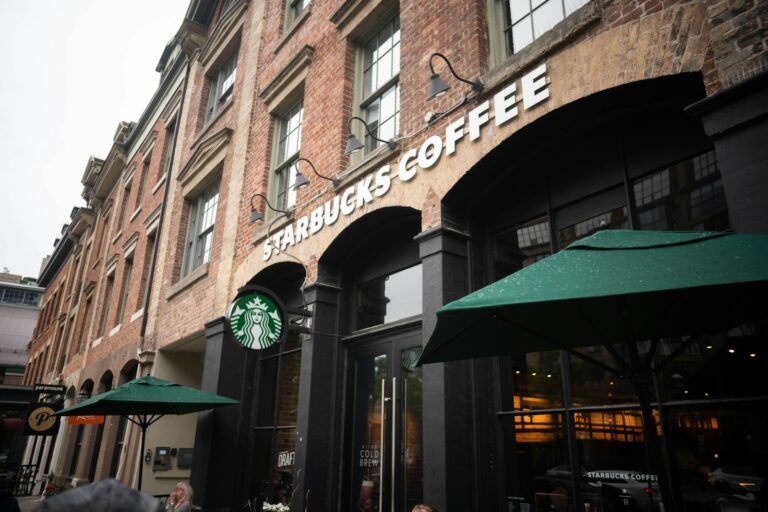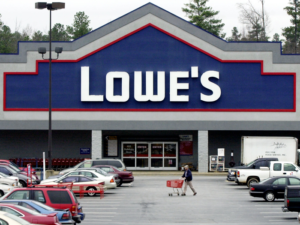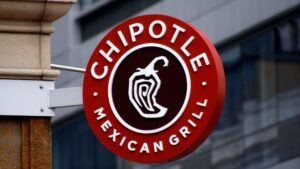Did you know that Starbucks, the world’s largest American coffeehouse chain, has over 35,000 stores worldwide? This staggering number is a testament to the global presence and impact of this iconic brand. As a coffee lover or a business enthusiast, you may wonder what factors contribute to Starbucks’ success and what challenges it faces in an increasingly competitive market.
In this comprehensive SWOT analysis report, we will delve into the internal and external strategic factors that shape Starbucks’ position in the coffee industry. By examining the company’s strengths, weaknesses, opportunities, and threats, we will uncover crucial insights that will shed light on Starbucks’ current state and its potential future trajectory.
Jump Ahead To :
Key Takeaways:
- Starbucks is the largest coffeehouse chain globally, with over 35,000 stores.
- The company’s strengths include a strong brand image, robust financial performance, and extensive international presence.
- However, Starbucks faces challenges such as high prices, product imitability, and competition from low-cost coffee sellers.
- Opportunities for Starbucks lie in expanding into new markets, diversifying its product offerings, and leveraging new technologies.
- Threats to Starbucks include competition, supply chain issues, and imitation by competitors.
An Overview of Starbucks
Starbucks is a leading coffeehouse chain with a global presence. Founded in 1971 in Seattle, Washington, it has grown to become the largest coffeehouse company in the world. Starbucks has built a strong brand image and a loyal customer base through its focus on quality and customer service. The company operates both company-run and licensed stores, offering a wide range of coffee, handcrafted beverages, and food items.
One of Starbucks’ key strengths is its strong brand recognition, which has been cultivated over several decades. This recognition gives the company a competitive advantage in the market, allowing it to attract and retain customers. Starbucks’ innovative business model, which combines a premium coffee experience with a comfortable and inviting atmosphere, has further contributed to its success.
With more than 35,000 stores worldwide, Starbucks has a significant market presence that enables it to reach a wide customer base. The company’s stores are strategically located in various countries, allowing it to tap into different markets and capitalize on local preferences and trends.
In addition to its physical stores, Starbucks has also embraced digitalization and offers a seamless omni-channel experience to its customers. This includes mobile ordering, payment options, and a robust loyalty program, all of which enhance the overall customer experience and drive customer loyalty.
Furthermore, Starbucks has taken steps to establish ethical sourcing practices and invest in the sustainability of its supply chain. Through initiatives such as the Starbucks Coffee Agronomy Company, the company promotes sustainable farming practices and supports coffee farmers around the world.
Starbucks Market Analysis
When analyzing the coffee market, Starbucks holds a prominent position due to its global market share and strong brand presence. The company’s market analysis indicates a consistent growth trajectory, driven by factors such as increasing consumer demand for premium coffee, the popularity of specialty coffee beverages, and a shift towards healthier and sustainable options.
Starbucks’ competitive advantage lies in its ability to consistently deliver a high-quality coffee experience while adapting to changing consumer preferences. This adaptability is supported by extensive market research and consumer insights, allowing the company to introduce new products and flavors that resonate with its target audience. Starbucks also focuses on creating a unique and personalized customer experience, setting itself apart from competitors and fostering customer loyalty.
Overall, Starbucks’ market analysis highlights the company’s strong position in the coffee industry. By leveraging its brand recognition, innovation, and customer-centric approach, Starbucks continues to thrive in a highly competitive market.
Starbucks Strengths – Internal Strategic Factors
Starbucks has built a strong foundation of internal strengths that have contributed to its success as a leading coffeehouse chain. These strengths have helped establish Starbucks as a global brand with a loyal customer base and consistent financial performance.
Strong Brand Image
Starbucks boasts a robust brand image which has been instrumental in attracting and retaining customers. With a brand value of $14.05 billion, Starbucks is recognized globally as a symbol of quality and excellence in the coffee industry.
Financial Performance
Starbucks has demonstrated consistent financial success, with an impressive annual revenue of $32.25 billion and a net income of $3.28 billion. This financial stability provides a strong foundation for Starbucks to continue its growth and expansion.
Continuous Store Growth
Starbucks has successfully pursued a strategy of continuous store growth, expanding its reach and presence worldwide. The company currently operates over 35,000 stores, showcasing its commitment to expanding its global footprint and meeting the demands of coffee lovers everywhere.
Extensive International Supply Chain
Starbucks has developed an extensive international supply chain that ensures a steady and reliable stream of high-quality coffee beans. By sourcing from three regions, Starbucks can maintain the consistent taste and quality that its customers have come to expect.
Diversified Business through Acquisitions
In its pursuit of diversification, Starbucks has made strategic acquisitions to expand its business beyond coffee. By acquiring companies like Teavana, Evolution Fresh, and La Boulange Bakery, Starbucks can offer a broader range of products and cater to a wider customer base.
Commitment to Quality and Standardization
Starbucks is renowned for its commitment to quality, taste, and standardization. Regardless of the location, customers can depend on the same high-quality coffee experience, ensuring consistency across all Starbucks stores.
Employee Satisfaction and Loyalty
Starbucks values its employees and emphasizes their well-being and satisfaction. This approach has fostered strong loyalty among Starbucks baristas, resulting in exceptional customer service and a welcoming environment in each store.
Strong Loyalty Program
Starbucks has developed a robust loyalty program that encourages customer retention and repeat business. The Starbucks Rewards program offers various benefits, including personalized offers, free drinks, and exclusive promotions, further reinforcing customer loyalty.
Increased Starting Wages for Baristas
Recognizing the importance of its employees, Starbucks recently increased starting wages for its baristas. This commitment to fair compensation enhances employee satisfaction and attracts top talent, contributing to the overall success of the company.

Starbucks Weaknesses – Internal Strategic Factors
Despite its strengths, Starbucks also faces internal weaknesses that require attention and strategic planning to address. These weaknesses include:
- High Prices Compared to Competitors: Starbucks has been known for its premium pricing strategy, which can be a deterrent for price-sensitive customers. Competitors offering lower prices may attract customers seeking more affordable options.
- Imitability of Products: Starbucks’ distinctive menu items and recipes are vulnerable to imitation by competitors. This poses a challenge for the company to maintain its unique selling proposition.
- Generalized Standards: The standardized approach adopted by Starbucks may not always align with consumer preferences in certain markets. Customization and adaptation to local tastes and preferences can be vital to cater to diverse consumer needs.
- Controversies: Starbucks has faced controversies related to tax avoidance in the UK, which has affected its reputation. Additionally, the company has been criticized for its procurement practices, raising concerns about its commitment to ethical sourcing.
- Product Recalls: Instances of product recalls in the past have had a negative impact on Starbucks’ brand image and consumer trust. Quality control measures need to be strengthened to avoid such incidents.
Addressing these weaknesses will be essential for Starbucks to maintain its competitive position and continue to meet evolving consumer demands.
Starbucks Opportunities – External Strategic Factors
Starbucks, being a global coffeehouse chain, has several external opportunities that it can leverage to further its growth and success. These opportunities include:
- Expansion into developing markets: Starbucks has the potential to tap into emerging markets where there is a growing demand for coffee and an increasing middle-class population. By establishing a presence in these markets, Starbucks can reach new customers and establish itself as a leader in these regions.
- Diversification of business and product offerings: Starbucks has traditionally been known for its coffee and related products. However, the company can explore opportunities to diversify its offerings and expand into new areas. This could involve introducing new food items, beverages, or even non-coffee related products to cater to a wider range of customer preferences.
- Partnerships and alliances: Starbucks can form strategic partnerships and alliances with other firms to enhance its market presence and gain a competitive edge. Collaborating with companies in related industries, such as food or technology, can open up new opportunities for Starbucks to expand its reach and explore innovative solutions.
- Exploiting coffee trends and technologies: By staying ahead of the latest coffee trends and leveraging technological advancements, Starbucks can maintain its position as an industry leader. This could involve incorporating new brewing techniques, offering innovative coffee flavors, or adopting sustainable practices to appeal to environmentally conscious consumers.
- Price differentiation strategies: Starbucks can explore different pricing strategies to attract a wider customer base. This could involve offering more affordable options for price-sensitive customers while still maintaining premium offerings for those willing to pay a premium for the Starbucks experience.
- Online channel strengthening: In an increasingly digital world, strengthening the online channels is crucial for Starbucks to reach a wider audience. By enhancing its e-commerce platform, mobile app, and delivery services, Starbucks can offer convenience and accessibility to customers, thereby expanding its customer base.
- Exploring coffee delivery services and subscriptions: With the rise of on-demand delivery services and subscription-based models, Starbucks can explore partnerships or develop its own coffee delivery services and subscription programs. This would allow customers to enjoy Starbucks products conveniently at their doorstep, providing additional revenue streams and increasing customer loyalty.
By capitalizing on these external opportunities, Starbucks can position itself for continued growth and success in the highly competitive coffee industry.

Starbucks Threats – External Strategic Factors
Starbucks, being a prominent player in the coffee industry, faces several external threats that have the potential to impact its business. These threats need to be carefully assessed and managed to ensure the company’s sustained success. The following are the key external strategic factors that pose threats to Starbucks:
- Competition with Low-Cost Coffee Sellers and Large Outlets:
Starbucks faces competition from both low-cost coffee sellers and large outlets that provide affordable alternatives to its products. These competitors can attract price-sensitive customers, potentially impacting Starbucks’ market share and revenue.
- Imitation by Other Companies:
As a leader in the coffee industry, Starbucks is susceptible to imitation by other companies attempting to replicate its success. Imitators can replicate Starbucks’ recipes, store ambiance, or business models, diluting Starbucks’ unique selling proposition and potentially eroding its brand equity.
- Potential Impact of Third-Party Delivery Supplier Strikes:
Starbucks relies on third-party delivery suppliers to provide convenient options for customers to enjoy its products. However, the dependence on these suppliers exposes Starbucks to the risk of disruptions caused by potential strikes or labor disputes. Any disruptions in the delivery service can lead to customer dissatisfaction and negatively impact Starbucks’ sales.
- Vulnerability to Commodity Price Fluctuations:
Coffee beans are a crucial input for Starbucks, and fluctuations in commodity prices can significantly impact its supply chain costs. Volatile coffee prices can affect Starbucks’ profitability and overall financial performance, making it vulnerable to market uncertainties.
- Threats from Competitors Offering Lower Prices and Imitating Starbucks’ Recipes:
Starbucks faces fierce competition from rivals that offer lower-priced coffee and imitate its popular recipes. These alternatives target cost-conscious customers who may prioritize affordability over brand loyalty. Price competition and recipe imitation pose ongoing challenges for Starbucks in maintaining its competitive edge.
Overall, Starbucks needs to navigate through these external threats by continually innovating, differentiating its offerings, and leveraging its brand strength to maintain its market position and customer loyalty.
Conclusion
In conclusion, Starbucks, the world’s largest American coffeehouse chain, excels in the coffee industry with its strong brand image and impressive financial performance. The company’s strengths lie in its widespread brand recognition, robust financials, extensive global reach, and loyal customer base. However, Starbucks also faces challenges in the form of high prices and the potential imitation of its products.
Looking ahead, Starbucks has significant opportunities to capitalize on. By diversifying its product offerings, exploring new markets, and embracing emerging coffee trends and technologies, the company can stay ahead of the competition and continue to satisfy evolving consumer preferences. It is essential for Starbucks to address threats such as increasing competition, supply chain complexities, and the risk of imitation.
Despite these challenges, Starbucks remains a powerhouse in the coffee industry. Through strategic adaptation to changing market dynamics, the company can sustain its success and continue to delight coffee enthusiasts worldwide.






